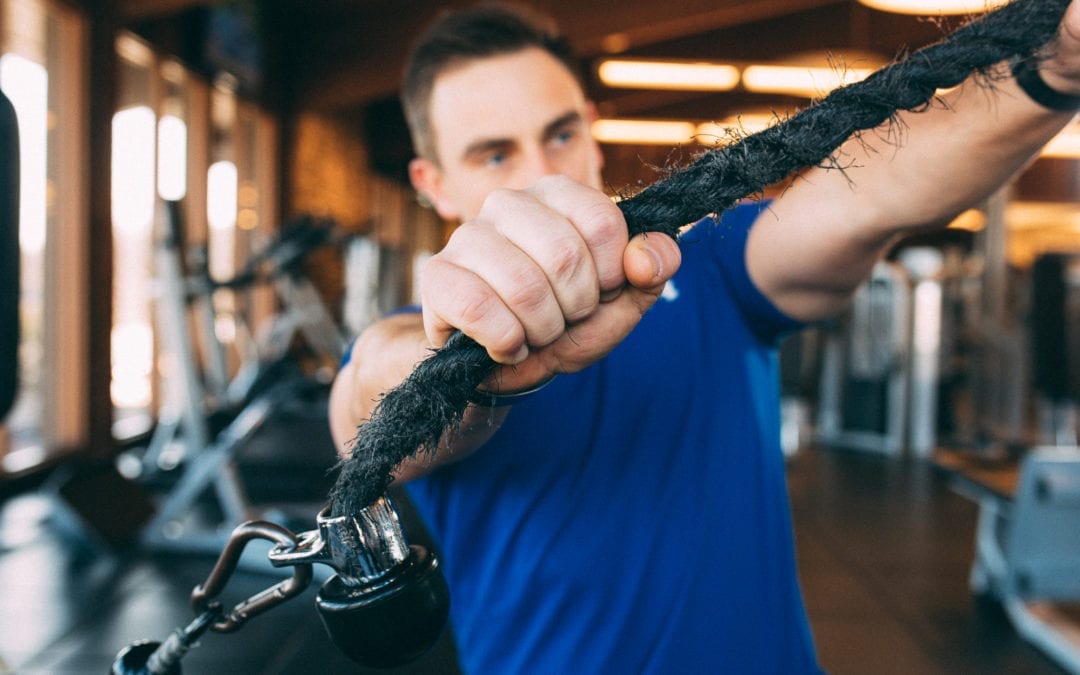Woodside Training Managers Kerstin Robertson and Simon Stanberg share how to build a workout at home based on the seven movement patterns to help support stronger stability and mobility. Read more about the movement patterns and how to implement them into your fitness routine below.
The Seven Movement Patterns
When planning a full body workout from home, understanding the seven basic movement patterns is critical to maximizing your results. This ensures you are using a large number of muscle groups and creating balance in the body. What are the seven movement patterns?
Squat
Squats are a great movement for training ourselves how to properly use the back side of our body. When doing a squat try to allow your posterior muscles to work starting at the hips. This will help you feel build strength in the entire back. A good squat also help promote better posture and can relieve lower back pain.
Exercises to Try: Squat over a box/chair, Prisoner Squat (arms held at ears), Goblet Squat.
Pull
Pulling exercises are some of the hardest to replicate at home with out machines. However, they are almost the most important workouts to master. The pulling promotes extension through the spine and helps us reverse some of the common issues that result from “hunching” over a computer all day. When practicing this movement focus on squeezing the shoulder blades together and releasing the pectoral muscles which can become extremely tight. Continued practice of this movement can result in better posture and less tension throughout the body.
Exercises to Try: Bent Over DB Row, Hip Hinge with Reverse Fly, Three Point Row.
Flexion
When talking about flexion we are reffering to the movement of the spine. When seated for long periods of time the lower or lumbar spine can become tight and sometimes sore. This is likely caused by over extension in that area. To alleviate some of this stress it is important to flex through that part of the spine. This can be achieved by really engaging the lower abdominal.
Exercises to Try: Dead Bugs, Reverse Crunches, Glute Bridges (rib cage stays down and you must be in posterior pelvic tilt).
Extension
Extension of the thoracic spine is one of the most effective ways you can support better posture. While you should be getting some support through effective pulling movements you might want to add in more extension movements to maximize your results. Again, trying to reverse gravity and the rounded back will be vital to sucessfully mastering this movement.
Exercises to Try: Locust Back Extension (on the ground), T-Spine Extension Mobility (in a chair), Kneeling Extension with Retraction.
Lunge
Lunges train the entire body to move efficiently when running or walking. It is an exercise allows you to not only work the posterior muscles of the leg but also teach yourself proper hip hinge so your glutes and hamstrings can become stronger. Lunges can also help lengthen out your tight hip flexors and are great for imbalances from side to side. If you know one side is less strong than the other try doing a 2:1 ratio on that side to build strength.
Exercises to Try: Step up onto a bench or box, Split Squat, Single Leg Hip Thrusts.
Rotation
Rotation is key when it comes to stability through the entire spine but mostly lumbar and thoracic. For the spine to rotate effectively it needs to be in a neutral or extended position. The spine does not like to rotate when it is “crunched” up. This can be achieved by training the transverse abdominus (think of it as your weight belt). Rotation also targets internal and external obliques.
Exercises to Try: Side Lying T-Spine Rotation, Banded Anti Rotation Press (even though you are not moving we are still challenging rotation), Quadruped Rotation.
What Kind of Push Up Are You? from Woodside KC on Vimeo.
Push
The pushing movement supports core stability as well as an ideal shoulder and scapula relationship. When doing push-ups and alike it is important to allow the shoulder blades to squeeze together on the way down to really begin building strength.
Exercises to Try: Push Up Variations (kneeling, on the ground, hands elevated, feet elevated), Forearm or Push Up Plank, DB Press.
Before Building out Your Workout
When you start building out your workout there are a couple of things to keep in mind.
Control your movements and tempo: It’s important to keep in mind that you can create intensity of your home workouts even if you don’t have equipment. If you are looking to elevate the intensity, try varying the tempo of your exercises (how long you are loading the muscle with tension). Focus on control and really feeling the movement you are making versus doing reps as fast as possible. A good model for tempo is 3 seconds eccentric (when the focus muscles is lengthening), 1 second pause, 1 second concentric (when you are contracting the muscles), and another 1 second pause.
Proper Alignment: Ensuring you are in proper alignment will completely change how you feel during an exercise and can help you avoid injuries.
Diversify your movements: We tend to lean towards doing exercises we know and like however, that can lead to muscle compensation in a particular area of the body. Diversifying your movements creates true strength. For example, a lot of people sit for work. If you’re workouts are curls, push ups and planks you might be causing your front part of your body to overdevelop. Learning a few simple back strengthening movements can help to balance your strength and support your posture while sitting.
Give Yourself Grace: Right now, it is important to not put too much pressure on yourself during this time away from the gym. You might not be achieving your biggest fitness goals and that is OK! The best thing you can do is keep your body moving and feeling good. You will be back in the gym and in your regular routine soon.


